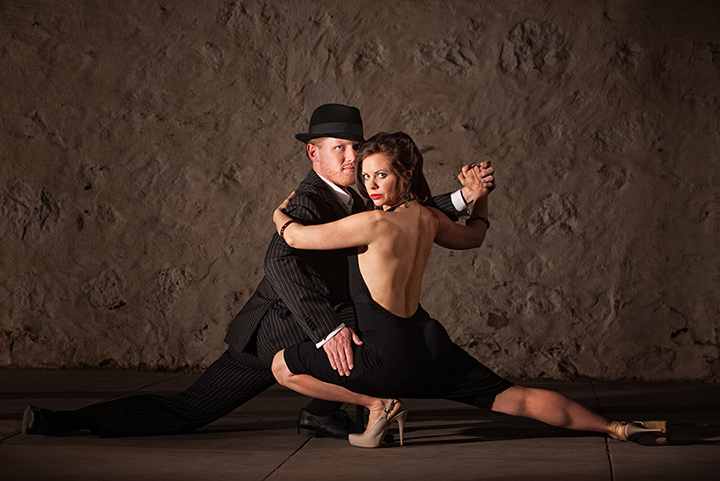Tango
History
The Tango originated in the late 1880’s around the area of the border between Uruguay and Argentina. In the early days it was known as the Creole Tango and there are many variations seen today. Its style origins can be seen in the Flamenco, Polka, Milonga and Habanera dances. It quickly spread as more and more people saw it done in the streets with barrel organ accompaniment.
The Tango craze spread to Paris and Europe when the orchestras and dancers travelled from Buenos Aries in the early 1900's. It reached the USA in around 1913 where there was already a dance term called the tango. This was applied to a dance with a 2/4 or 4/4 beat. This then became known as the ‘North American tango' and the new dance was the Argentine Tango.
The Great Depression saw the Tango decline in Argentina and was not revived until Juan Peron ran the country. It was considered to be part of the national pride to do the Tango.
The Tango is quite a dramatic dance with considered steps and moves, turns and spins. It is danced with the body in a very upright position. The dress has changed over the years and most people when asked about the Tango see the man in a suit of some sort, Flamenco or Tux style and the woman in a Flamenco style dress or ball gown.

Styles of Tango
The Tango has evolved into many styles over the years and can be danced in an open embrace or closed embrace style. In the open embrace the couples stay apart with arms holding each other and in the closed embrace the chest or thighs are in contact with each other. The Argentine Tango connects in the chest and the American and the International Tango connect in the thigh region.
Different styles include:
- Tango Argentine
- Ballroom Tango
- Uruguayan Tango
- Tango salon
- Tango milonguero
- New Tango
- Finnish Tango
Ballroom Tango
This style of Tango has its origins in Europe when the dance was first introduced there and it is has been made a bit simpler than the more complicated original version. It has been adapted into International and European styles. The English Tango was adapted to fit into ballroom dancing conventions and was codified in the early 1920's. It was decided the dance would be done to only modern music at 120 beats each minute in a 4/4 time.
This modern Tango has precise steps and the ‘head snaps’ so recognisable today in the dance. The head snaps are from the Pasodoble where most of the Tango's theatrical moves have emerged from.
Techniques
The steps in a ballroom Tango allow you to glide across the floor with your partner and this is done by moving the body mass through the hips and knees first followed by the feet in a catch up dance.
Flexibility is important in the Tango as sometimes the partners are close together and other times they form a ‘V’ shape with the upper body leaning away from your partner.
Dance moves
Dance moves for the Ballroom Tango include:
- Back corte
- Basic walk
- Brush tap
- Rock turn
- Promenade Link
- Outside swivel
- Fallaway four step
- Oversway
- Contra check
- Four step
- Natural twist turn

